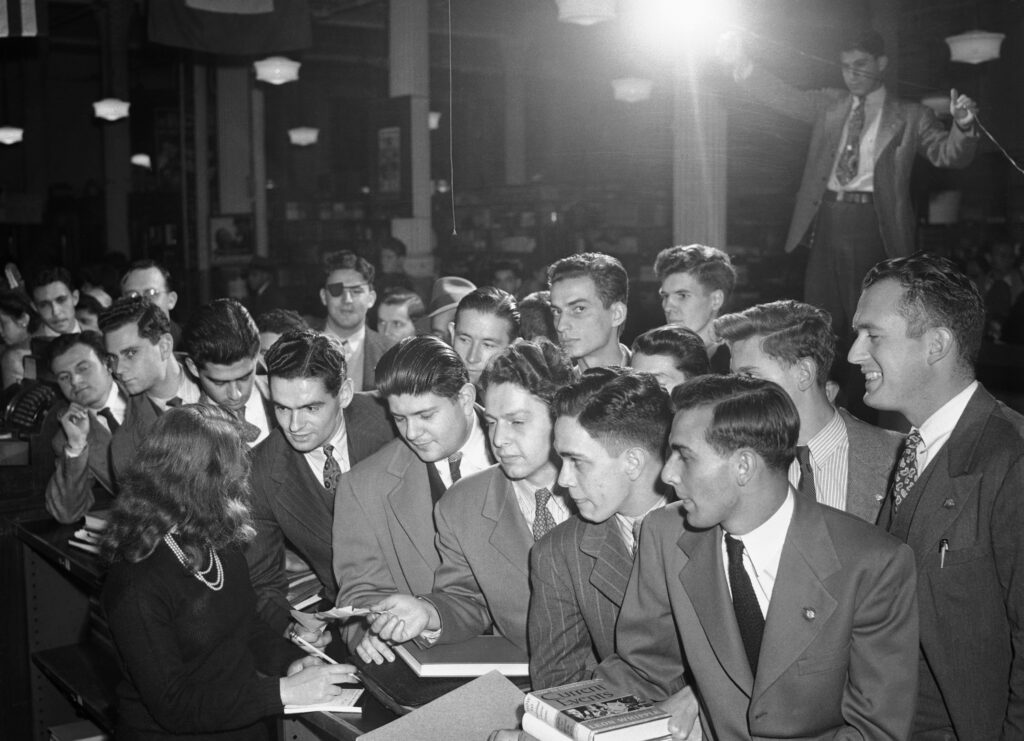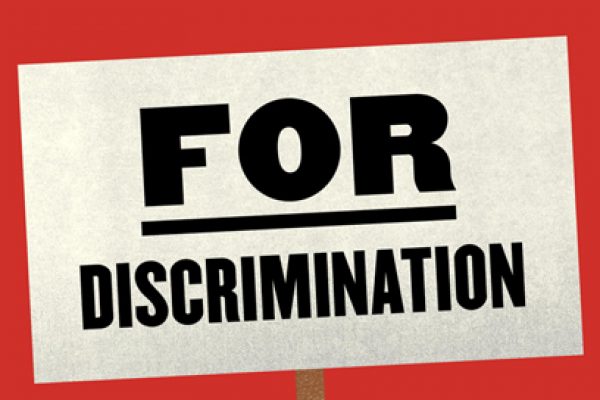First published in 2005, my book When Affirmative Action Was White answered a question Lyndon Johnson posed at Howard University’s graduation ceremony in June 1965: Why had the large gap between Black and white income and wealth at the end of World War II widened during two decades marked by dramatic economic growth and widespread prosperity?
The book told the story of sanctioned racism during and just after the Great Depression and World War II. During this period, master politicians from the South proudly protected their region’s entrenched white supremacy by passing landmark laws that made the great majority of Americans, the overwhelming white majority, more prosperous and more secure, while leaving out most African Americans, in full or in part. Ever since, many persons left behind have continued to experience deep poverty, together with social and spatial isolation.
The book’s account of blatant discrimination has been challenged in the seventeen years since it appeared. Two lines of argument are especially noteworthy. One questions whether domestics and farm laborers—critical categories of Black employment—were in fact kept out of Social Security for reasons of race. The second argues that the book underestimates the bounty of the GI Bill for Black Americans. Both objections deserve respectful review.
Taking up the story of the exclusion of agricultural and domestic workers in the Social Security Act, some critics argue that an alternative explanation is more compelling. Among earlier counterpart legislation in Europe and Canada, comparable programs often had excluded farmworkers and maids for practical, not racial, reasons. New Deal policy leaders knew this history and were acquainted with many overseas experts who had drafted social insurance legislation.
This alternative story is not without merit. Within the Roosevelt administration, Secretary of the Treasury Henry Morgenthau did express skepticism about including domestics and farmworkers. His concerns were technical. Manifestly, it is more difficult to keep track of persons with these often ephemeral jobs than of individuals whose work is more fixed and persistent.
Nonetheless, the legislative history of the Social Security Act supports the race-centered argument. The basis for congressional action, report by President Franklin Roosevelt’s Committee on Economic Security, unambiguously stated, “We are opposed to exclusions of any specific industries within the Federal act.” Focusing on persons at the bottom of the wage scale, the document explicitly stressed that “agricultural workers, domestic servants, [and] home workers” must be included. Following this explicit advice, the bill the White House sent to Congress included these groups.
Only when the legislation was considered in the House Ways and Means Committee, which was chaired by Robert “Muley” Doughton of North Carolina, and in the Senate Finance Committee, which was chaired by Pat Harrison of Mississippi, were the occupational categories removed from the legislation. Seventeen of the thirty-three members of their committees shaping the bill were southerners from states that practiced legalized racial segregation. Their reasoning was summarized by Senator Harry F. Byrd and Representative Howard W. Smith, both of Virginia, when they testified to their chambers’ Finance Committees. The presence of agricultural and domestic workers, they insisted with alarm, would lead to more equal treatment for white and Black people and thus would upend the region’s ability to deal on its own terms with “the Negro question.”
The pattern of exclusion promoted by Jim Crow representatives, it is important to underscore, was not limited to the Social Security Act. Farmworkers and maids—the great majority of African Americans in the South’s labor force—likewise were not protected by the labor provisions in the National Industrial Recovery Act and the National Labor Relations Act. Nor were they covered by the minimum wage and maximum hours conditions of work conferred by the Fair Labor Standards Act, as When Affirmative Action Was White demonstrates. Not one of these enactments—the very pillars of the New Deal—passed into law without disqualifying domestics and agricultural workers. In every instance these exclusions were enacted in Congress at southern insistence.
A second line of criticism concerns the GI Bill, often rightly celebrated as boosting millions of veterans and their families into middle-class status. Many beneficiaries included Black veterans. “The GI Bill,” I wrote in When Affirmative Action Was White, “offered eligible African Americans more benefits and more opportunities than they possibly could have imagined in the early 1940s” when they were serving in the still-segregated military. My emphasis, however, was on how the legislation that was written in committees chaired by the arch-racist Congressman John Rankin of Mississippi and the more moderate segregationist Senator Bennett Champ Clark of Missouri specified administrative decentralization to guard the South’s racial order. I showed how their committees managed to actually strengthen Jim Crow despite the law’s formal universalism and the absence of any explicit mention of race.
An important book published just after mine, Soldiers to Citizens: The G.I. Bill and the Making of the Greatest Generation (2005) by political scientist Suzanne Mettler, emphasizes gains for Black people rather than these limits. She especially underscores how, across the country, African Americans used the law’s education and training provisions at a higher rate (49 percent) by 1950 than did white veterans (43 percent). Both in the Jim Crow states and in segregated Washington, D.C., fully 56 percent of Black people took up these opportunities, compared to 50 percent of the South’s white veterans. These numbers constitute the key basis for her argument that, contrary to the view I was advancing, “the G.I. Bill’s benefits reached African American service members.”
This celebration omits a pressing question: not the level but the content of participation. As the southern members of Congress intended, Black and white people unevenly utilized different aspects of the GI Bill’s education and training provisions. Across the country, 28 percent of the law’s white beneficiaries born between 1923 and 1928 enrolled in colleges and universities, compared to 12 percent of Black veterans. In the South some 70,000 qualified African Americans were denied places in the region’s segregated system of higher education because the various state governments did not adequately fund their historically Black colleges and universities to meet the demand. African American education and training usage thus was generated overwhelmingly by participation in vocational training.
We know quite a lot about the shocking racism of these programs. Stimulated by the availability of GI Bill subventions, these vocational schools enjoyed astonishing growth. When the bill passed into law in 1944, only thirty-five such private institutions existed. By 1950 there were 10,143. The establishments that served southern Black people were, to use a word I rarely use, abominable. The southern-dominated congressional committees had seen to it that there would be no federal government oversight or standard setting for these schools. With only state governments regulating this sphere, African Americans were confined to all-Black programs and were trained exclusively for all-Black jobs.
These institutions, I underscored, were prone to fraud. Scam artists cynically took the top rate of tuition allowed by the law in exchange for little or no actual instruction. Not surprisingly, a review of 314 southern vocational schools for African Americans conducted in 1947 by the National Urban League found the state of Black vocational education to be lower than it was in 1945. Another report written at the time commented that “it is doubtful if many of” the schools “meet minimum standards for this kind of training” and that “in the absence of other opportunities, the Negro veteran may be easily exploited.” Similarly, the region’s on-the-job training programs run by individual states were restricted by racist norms; almost no white-owned businesses were enlisted to instruct Black trainees.
I stand by my assessment. Certainly, whenever and wherever Black ex-soldiers could take advantage of the GI Bill’s provisions, they did. Especially north of the Mason-Dixon Line, despite much discrimination, they gained access to long-denied parts of American institutional life—colleges, jobs, and homes. But in the South, the law was reprehensibly retrograde for the majority of Black veterans. The GI Bill thus recognized and helped reproduce, even strengthen, the southern racial order. For that reason, I concluded that “the way in which the law and its programs were organized and administered, and its ready accommodation to the larger discriminatory context within which it was embedded, produced practices that were more racially distinct and arguably more cruel than any other New Deal–era program.”
The policy history at the center of When Affirmative Action Was White was written as a public intervention. I was unhappy with the terms of public debate about whether, and how, to rectify the history of racism in the United States. Claims for reparations were ethically on target, but their underspecified qualities made them seem utopian, politically impossible. Broad appeals favoring reparations based on America’s disturbing and long history of white privilege, however proper, were unlikely to garner necessary public support. In turn, arguments against affirmative action and reparations unconvincingly wore the mantle of color-blindness. Any use of race, their claim went, is inherently racist. That orientation required profound historical ignorance and a disturbing silence about the country’s history of anti-Black racism.
I sought an alternative. By telling the story of when affirmative action was white, I hoped to motivate present possibilities by underscoring recent official patterns of discrimination and exclusion. This approach made it possible to intercede in debates about affirmative action by advocating specific remedies for the particular harms my research had identified. Acts of rectification, I argued, should address the consequences of injuries in the generation of our parents and grandparents, injuries that had been targeted, specific, painful, and enduring.
At Howard University, President Johnson had observed, “You do not take a person who, for years, has been hobbled by chains and liberate him, bring him up to the starting line of a race and then say, ‘you are free to compete with all the others,’ and still justly believe that you have been completely fair.” After When Affirmative Action Was White appeared, it often elicited a “that’s not fair” response and not only in expected quarters. An example of the book’s approach to rectification has been adopted by Representatives James Clyburn of South Carolina and Seth Moulton of Massachusetts. Addressing the “not fair” aspects of the G.I. Bill, these Democrats have proposed to offer housing loans and educational assistance to the few remaining “Black veterans of World War II, and surviving spouses and certain direct descendants of such veterans.”
In presenting this legislation, Clyburn and Moulton underscored how, as a result of the provisions I identified, the majority of Black veterans had been denied equal access to “low-interest loans to start a business or farm, unemployment compensation, and education assistance . . . by mostly-white state and local Veterans Administrations.” They emphasized that “purposeful discriminatory federal, state, and local policies, along with political and institutional barriers, created significant inequity in access to GI Bill benefits” and “prevented these heroes from achieving the full economic mobility potential provided by these comprehensive federal benefits, and affected the accumulation of wealth by Black families over generations.” This model could be extended to other policy areas.
Of course, much has happened in the decade and a half since the publication of When Affirmative Action Was White, not least the financial collapse of 2008, the COVID-19 pandemic, and the murder of George Floyd—this last just one indicator of the country’s profound crises of policing and criminal justice. All of these developments have illuminated and exacerbated racial inequality. To be sure, there have been gains in fairness, equity, and diversity, yet the country continues to experience deep injustice.
Manifestly, the span separating the good from the ugly has widened. This range—signified by the successive terms of President Obama and Donald Trump, the country’s most blatantly racist leader since Woodrow Wilson—reminds us that racism is neither fixed nor unitary. Often moving in more than one direction, it possesses multiple dimensions. These include physical segregation, personal insecurity, desperate material conditions, cultural disrespect, and barriers to equal civic participation.
To help overcome injustice in all of racism’s dimensions, I concluded When Affirmative Action Was White by advocating efforts to “extend affirmative action in order to end it within one generation.” Combining hope and expectation, this proposal, I realize, was too simple. Certainly, the prospect has not been achieved. Arguably, the policy challenges posed by the book have become even more difficult, even more vexing. The distance required for decent remediation has yet to be navigated.
There is much to do.
Editors’ Note: This essay is adapted from When Affirmative Action Was White: An Untold History of Racial Inequality in Twentieth-Century America by Ira Katznelson. Copyright © 2023 by Ira Katznelson. Used with permission of the publisher, Liveright Publishing Corporation, a division of W. W. Norton & Company, Inc. All rights reserved.
We’re interested in what you think. Send a letter to the editors at letters@bostonreview.net. Boston Review is nonprofit, paywall-free, and reader-funded. To support work like this, please donate here.







